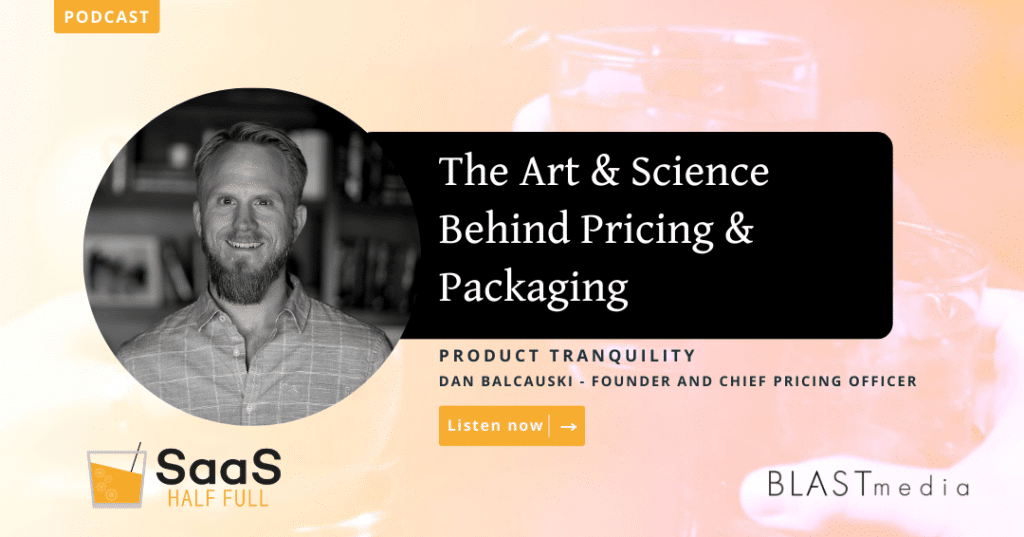Who is in charge of pricing decisions at your SaaS org? For nearly 60% of companies, it’s the CEO or an opinionated decision-maker in the C-suite. But who should own it?
Project Tranquility Founder Dan Balcauski answers this question in the newest episode of SaaS Half Full, breaking down the art and science of SaaS product pricing and packaging (two very different elements) and advocating for marketers to focus on the “who” and “how” they charge instead of the price itself (AKA, the “what”).
So, who owns product pricing?
Ask 100 different SaaS leaders this question, and you’ll likely receive 100 answers. But according to Dan, most SaaS companies jointly assign pricing responsibilities to the CEO and finance, sales and product teams. But this structure leads to misalignment in price and “limits the ability to make progress.”
“The CEO is probably concerned about reporting their gross margins to the board and making sure that burn rate is acceptable…. [while] sales is very much transaction-driven, and so they’re going to want to make sure that pricing doesn’t get in the way of meeting their quota for the quarter… [Meanwhile], you’ve got marketing trying to maximize conversions and awareness,” said Dan. “And so when you add that mix together, it becomes quite a minefield to navigate.”
The best product pricing decision-maker? Ideally, a product marketing leader — or a dedicated pricing leader for companies with more than $200M in annual revenue.
Vesting full responsibility to a single team or leader ensures the final decision is direct and value-driven. Additionally, by removing the CEO from the equation, product pricing becomes less of a “political hot potato.”
Packaging ≠ pricing
Many SaaS decision-makers talk about pricing in terms of ones and zeros (well, .59s and .99s). But there’s more to pricing decisions than the numerical price itself. Dan suggested considering pricing and packaging as separate but related concepts to understand this difference.
Take McDonald’s, for example. By no means a SaaS organization; McDonald’s still adopts a similar packaging model as software. They sell their famous Big Mac in different packages: value meal, supersized, etc. Although McDonald’s pays the same price-per-Big-Mac (PPBM, if you will), they receive an additional payment based on accompanying items (e.g., fries, Coke, salad, vanilla latte).
Therein lies the trick to pricing: Identifying which accoutrements will entice users to pay different prices for the same essential offering.
“[Decision-makers hung up on arbitrary pricing differences are] painting in black and white, and they’re never gonna be able to paint a beautiful sunset if they only have a conversation at that specific level,” said Dan.
The “who” and “why” of pricing > the “what”
Most organizations develop ideal customer profiles (ICPs), but is this information shared organization-wide? According to Dan, not typically — but it should be, or else the product will never find a market fit. Pricing decision-makers should prioritize developing ICPs, and customer-proof points early in the process.
“[Lack of ICP sharing is] highly dysfunctional because then you have one team building a product for ostensibly a different customer than we’re trying to market and sell to,” said Dan. “So, when those leads come in the door, they’re not going to buy, the product won’t be right for them. So it’s going to be sadness all around.”
For more of Dan’s insights on how to avoid “sadness all around” in product pricing, listen to Episode 347 of SaaS Half Full.

